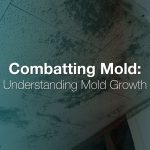Through our years of experience and expertise in the restoration industry, one of the most frequent questions we are asked is “how long does it take to dry a home/structure after a flood or other major water loss?”
We understand the urgency and the desire for people to get back into their homes or business so that they can return to a life of normalcy— resuming normal business operations, eating in their own kitchens, making conference calls from the conference room and sleeping in their own beds. Water losses can displace, disorganize and disrupt your daily life, and we are here to help bring your building back to life as quickly and safely as possible.
Over the years we have seen that people will dry a home for weeks or months and expect the insurance company to pay for it, but the crucial step in restoring a home after a water loss is to determine a dry standard.
What Is A Dry Standard?
The Institute of Inspection Cleaning and Restoration Certification (IICRC) defines the dry standard as “a reasonable approximation of the moisture content or level of a material prior to a water intrusion.” (Source: Restoration & Remediation)
“Dry standards are unique for every structure and even specifically unique for the same material in different parts of the structure,” Houston Summers, partner at Sasser Restoration said.
The Sasser team determines the dry standard in the damaged structure by finding an unaffected material in a similar location of the building. By using that, we will have a standard for how dry the affected areas should be in similar areas of the house.
For example, a baseboard in the back room of a home that never receives sunlight is likely to have a different base moisture content than a baseboard that would be in the front of the home that receives a ton of sunlight in the morning.
“So, dry doesn’t always mean is 100% dry,” Summers said. “What we really aim for is below 16 or 17 percent moisture content with a particular wood item. Furthermore, that item needs to be within plus or minus two percent moisture content of a similar item in a similar location that was unaffected by the water. Once it has reached that moisture content, within plus or minus two percent of the dry standard, we would consider that item dry.”
Why Does A Dry Standard Matter?
Whether you have suffered a Category 1 water loss or a Category 3 water loss, the water damage can be extensive and lead to further problems if not addressed correctly and quickly.
One of the ways that further damage could occur if a water loss is not handled properly is through mold and microbial growth. According to the EPA, mold comes in many forms, is a natural part of the environment and can be found almost anywhere that moisture and oxygen are present. Mold can grow on wood, paper, carpet, food, insulation and other surfaces, and when it does, it can be detrimental to your health.
On the flip side, if a structure is over-dried, that can cause issues as well. For instance, if a piece of wood’s moisture content was around four or five percent, you would see trim popping off walls, nails coming out of the drywall and things of that nature.
Determining a dry standard and adhering to the dry standard are critical steps when facing a water loss.
Whether it’s from a burst pipe, a hurricane, a flood, or even the water used to put out a fire, when you’re facing a water loss in your home or building, Sasser Restoration is ready to bring your building back to life.



